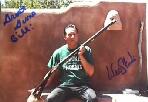hawkeye1755
54 Cal.
- Joined
- Oct 10, 2005
- Messages
- 1,775
- Reaction score
- 0
Just find my old books from J.F.Cooper.
It's start: It was a cloudless day in july 1740....
1740? At that moment i ask myself , what kind of rifle was[url] KILLDEER.In[/url] the book stand:
The piece was a little longer than usual, and had evidently been turned out from the work shops of some manufacturer of a superior order. It had a few silver ornaments, though, on the whole, it would have been deemed a plain piece by most frontier men, its great merit consisting in the accuracy of its bore, the perfection of the details, and the excellence of the metal....
So what do you think.
Cooper write 'The Deerslayer' in 1841 but the story is in the year 1740.
In 'THE LAST OF THE MOHICANS' from 1992 Killdeer
looks like a Lehigh Rifle.
:hatsoff:
It's start: It was a cloudless day in july 1740....
1740? At that moment i ask myself , what kind of rifle was[url] KILLDEER.In[/url] the book stand:
The piece was a little longer than usual, and had evidently been turned out from the work shops of some manufacturer of a superior order. It had a few silver ornaments, though, on the whole, it would have been deemed a plain piece by most frontier men, its great merit consisting in the accuracy of its bore, the perfection of the details, and the excellence of the metal....
So what do you think.
Cooper write 'The Deerslayer' in 1841 but the story is in the year 1740.
In 'THE LAST OF THE MOHICANS' from 1992 Killdeer
looks like a Lehigh Rifle.
:hatsoff:
Last edited by a moderator:








